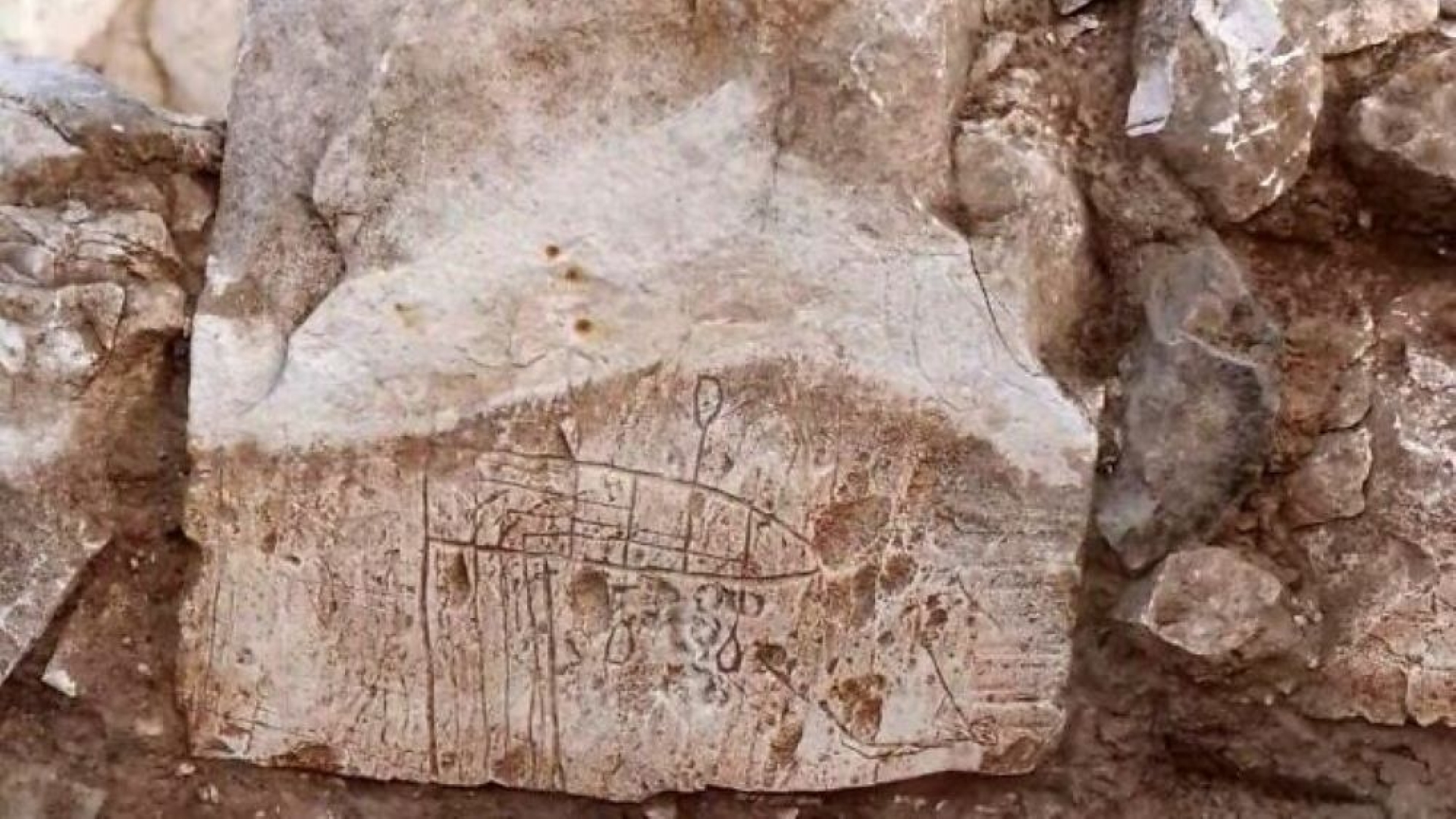Israel: Discovery of Ship Drawings in a Byzantine Church in Negev

Images of ships carved on the walls of a Byzantine church
The Israel Antiquities Authority (IAA) made a very interesting discovery in a church of the Byzantine era located in the desert of Negev, south of the present-day Bedouin city of Rahat. The place was undoubtedly the first stop of pilgrims arriving by sea in Gaza to visit the Holy Land. The discovery was reported by an article in The Times of Israel newspaper.
The discovery was announced in an IAA statement on Thursday, May 23, 2024. The Times of Israel reports: “The recent work was conducted by IAA archaeologists Oren Shmueli, Dr. Elena Kogan-Zehavi and Dr. Noé David Michael, in conjunction with Prof. Deborah Cvikel of the University of Haifa’s Department of Maritime Civilizations.”
Because what aroused the curiosity of the researchers during the excavations of a Byzantine church north of the Negev desert was the uncovering of “1,500-year-old wall etchings of ships, likely left by Christian pilgrims who had arrived by sea to the Holy Land.”
The area is “only a half-day’s walk” from a Roman road which connected the port of Gaza to Beersheba, the Biblical Bersabee, which marked the southern end of the country occupied by the Jews in the Old Testament. The expression “from Dan to Bersabee”--Dan being the name of the country’s northernmost city--referring to the North-South expanse of Jewish territory.
This proximity to the Roman road, “the IAA noted,” can explain “the etchings of ships in the desert.” Archaeologists believe that this “church and the Rahat area were likely the first stop for pilgrims after disembarking, before they traveled to Christian sites in Jerusalem, Bethlehem, the Negev or Sinai.”
Very Precise Graffiti
The archaeologists explain: “Pilgrims visited the church and left their personal mark in the form of ship drawings on its walls. The ship is indeed an old Christian symbol, but apparently in this case it is a true graphical depiction of real ships in which the pilgrims traveled to the Holy Land.”
“One of the ship illustrations is a simple line drawing, with a slightly pointed bow and discernable oars on both sides, similar to some etched ship designs left by pilgrims in Jerusalem’s Holy Sepulcher church, Cvikel [the specialist in Maritime Civilizations] noted.”
Cvikel adds that “Another drawing depicts what is apparently a two-masted ship. The main mast has no sail, but seems to show a small flag in its upper section. The foremast is slightly raked towards the bow and bears a sail known as an artemon. The exacting detail indicates the artist’s familiarity with maritime life.”
“Similar ship etchings, thought to be 2,000 years old, were discovered several years ago on the walls of an ancient cistern in Beersheba,” The Times of Israel explains.
This discovery reminds us that pilgrimages to the Holy Land are extremely ancient: like that of Egeria (or Etheria), a great lady from the West who went to Jerusalem in 381; for three years, she visited all the holy places of the Christian Near East, not only in Palestine, but also in Egypt, in Sinai, in Transjordan, and in Syria.
From Constantinople, she wrote to Western correspondents the account of her journey, describing all these holy places that she visited and, in a particularly detailed manner, the liturgy she saw celebrated in the sanctuaries of Jerusalem. This fascinating story is a mine of information on the beginnings of Christian pilgrimage to the Near East.
(Sources : IAA/The times of Israel/Sources chrétiennes – FSSPX.Actualités)
Illustration : Dessins de navires découverts lors des fouilles de l’église de Rahat. (Crédit : Yoli Schwartz/IAA)





